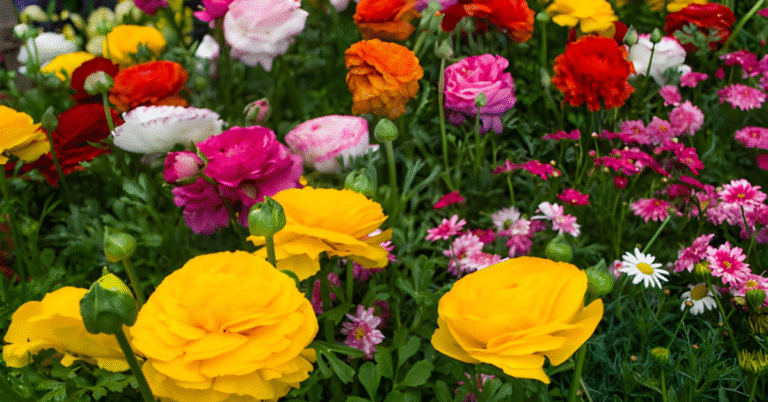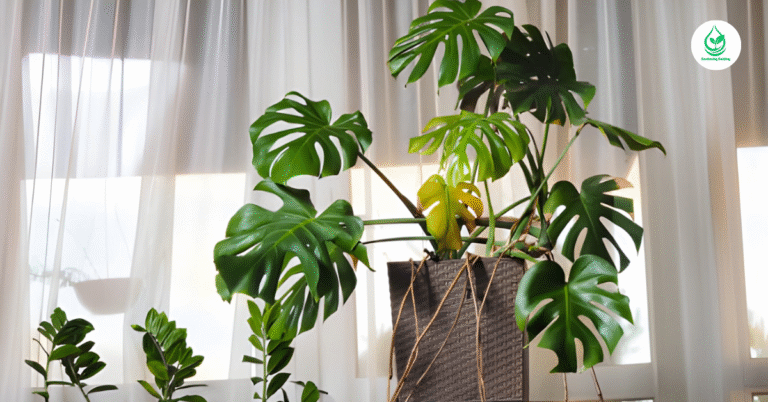10 Top Most Popular Flowers
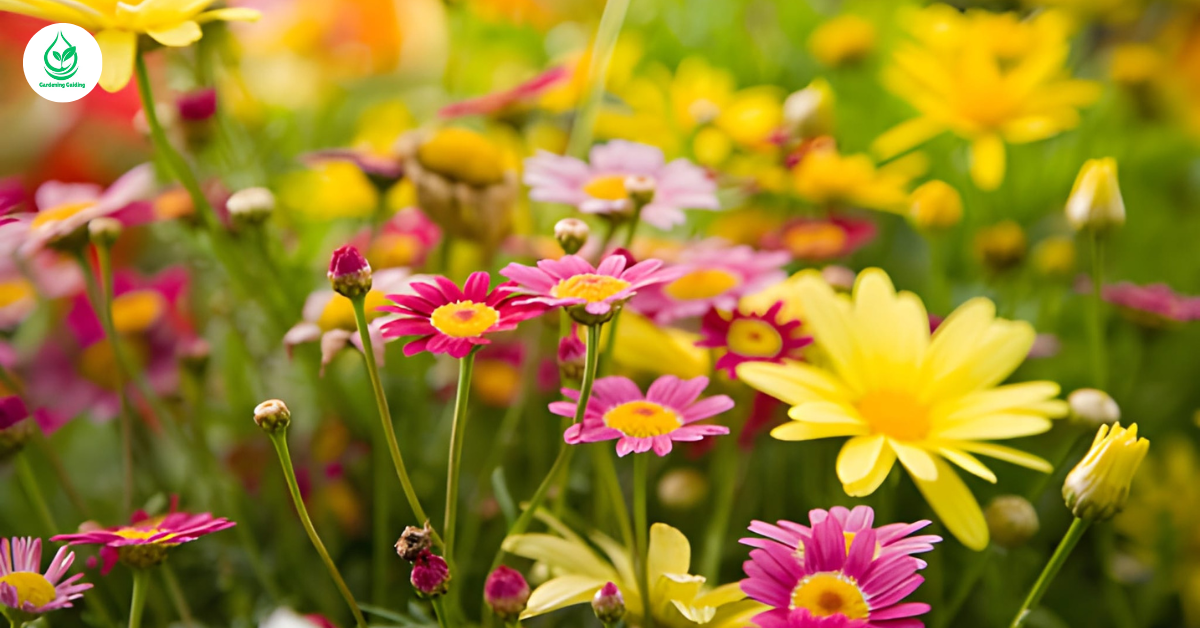
Introduction
Flowers have always been nature’s way of adding color, fragrance, and joy to our world. They don’t just brighten gardens but also symbolize emotions like love, friendship, and hope. Whether you’re decorating your home, planning a garden, or simply admiring nature’s beauty, knowing the most popular flowers helps you make choices that stay timeless. In this guide, we’ll explore 10 top most popular flowers—their charm, meaning, and how you can grow and enjoy them in your own garden or indoors.
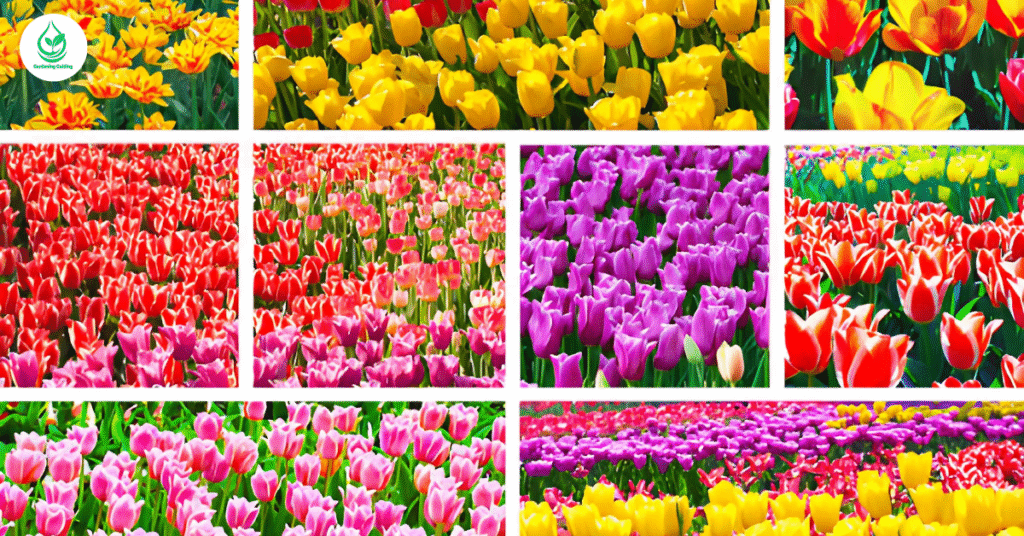
1. Roses – The Eternal Symbol of Love
A Flower for Every Emotion
Roses are often called the “queen of flowers,” and for good reason. Each color of rose carries its own meaning—red for love, white for purity, pink for admiration, and yellow for friendship. Because of their emotional depth, roses are used in everything from romantic gestures to weddings and garden designs.
Growing Conditions for Healthy Roses
Roses thrive in full sunlight and well-drained soil. Water them deeply at least twice a week, ensuring the roots stay hydrated without causing fungal issues. Regular pruning helps remove dead blooms and keeps the plant full of fresh, new growth. Feeding them with a balanced fertilizer in spring and mid-summer ensures continuous, healthy blooms.
Decor and Garden Uses
Roses fit beautifully into both classic and modern gardens. They look stunning when planted along fences, trellises, or pathways. Indoors, a vase of fresh roses instantly transforms the mood of any room—creating elegance and calm. You can also dry rose petals for potpourri or make rose-infused oils for skincare.
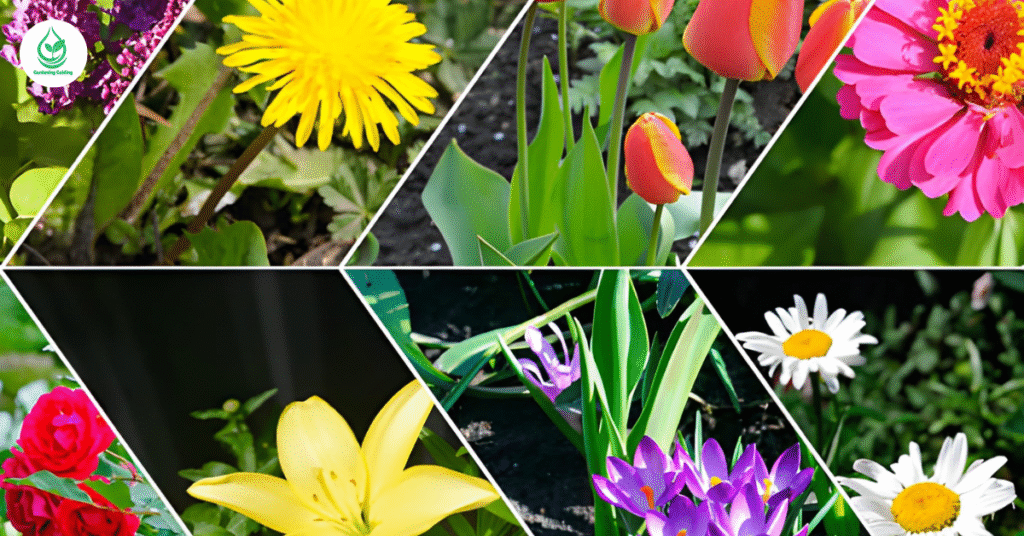
2. Tulips – The Harbinger of Spring
Colorful Beauty in Every Shade
Tulips are cheerful, symmetrical flowers that bloom in early spring, announcing the end of winter. They come in a dazzling variety of colors, from soft pastels to bold reds and purples. Each shade represents a different emotion—pink for affection, yellow for cheerfulness, and purple for royalty.
Planting and Care Tips
Tulips grow best in areas with cool winters and dry summers. Plant bulbs in well-draining soil during autumn, about 6–8 inches deep. They prefer full sunlight but can tolerate partial shade. After blooming, allow the leaves to wither naturally to store energy for next year’s growth.
Design Inspiration with Tulips
Tulips make perfect border plants or centerpiece arrangements. You can mix multiple colors in one bed to create a rainbow effect. For indoor elegance, a vase of single-color tulips can instantly lift your room’s aesthetic. They also make ideal gifts for spring celebrations.
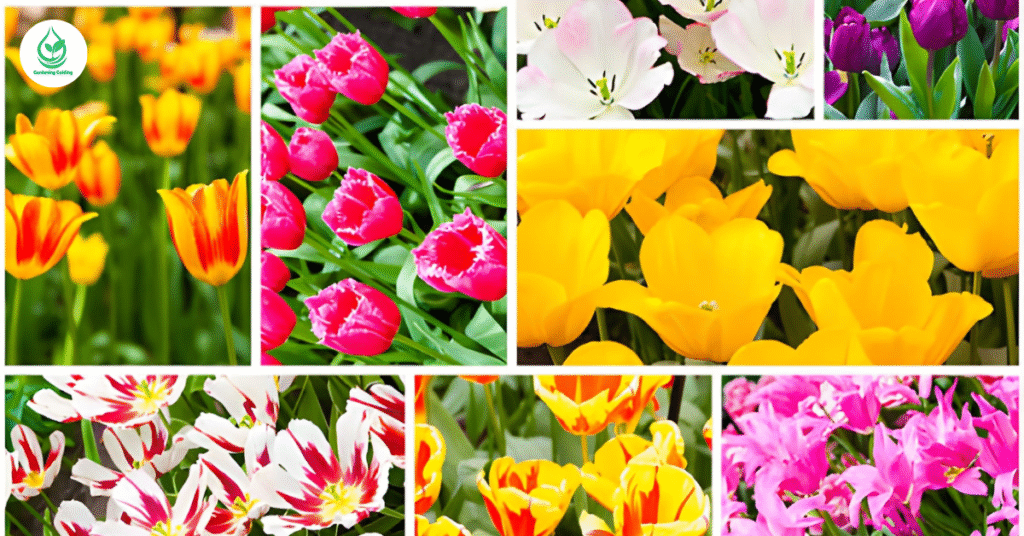
3. Sunflowers – The Faces That Follow the Sun
Symbol of Positivity and Strength
Sunflowers are famous for their large, radiant faces and ability to track sunlight—a phenomenon known as heliotropism. They symbolize warmth, happiness, and optimism. A field of sunflowers is often seen as a representation of hope and energy.
How to Grow Sunflowers Successfully
These flowers need full sun—at least 6 to 8 hours a day—and thrive in nutrient-rich, well-drained soil. They can grow tall (some varieties up to 10 feet!), so support stakes may be necessary. Water regularly, but avoid soggy soil to prevent root rot. Sunflowers are also great pollinator magnets, attracting bees and butterflies.
Creative Ways to Use Sunflowers
Sunflowers make excellent garden backdrops due to their height. You can also grow dwarf varieties in pots for patios or balconies. Indoors, sunflower arrangements bring instant cheer to dining tables and living rooms. Dried sunflower heads make beautiful rustic decorations.
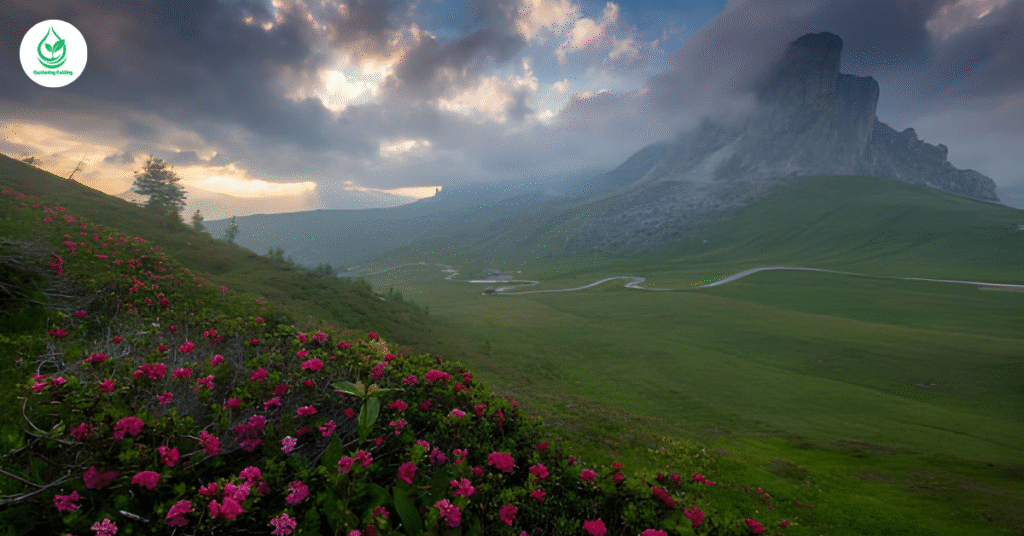
4. Orchids – The Epitome of Elegance
Exotic Beauty and Symbolism
Orchids are known for their delicate, exotic appearance and rich symbolism. They represent love, beauty, and luxury. Ancient cultures considered orchids a symbol of strength and fertility, and today they’re among the most sought-after houseplants worldwide.
Care Essentials for Orchids
Orchids prefer indirect sunlight and high humidity. Place them near bright windows but shield them from direct sun. Water once a week by soaking the pot and letting it drain completely. The key to keeping orchids happy is airflow—stagnant air can lead to root diseases. Use orchid-specific potting mix for best results.
Decor Ideas with Orchids
Orchids instantly add sophistication to indoor spaces. A single orchid stem in a glass vase looks elegant on tables, bathrooms, or office desks. Their long-lasting blooms make them ideal for minimal yet striking home décor. You can also mix them with other tropical plants to create a lush indoor jungle.
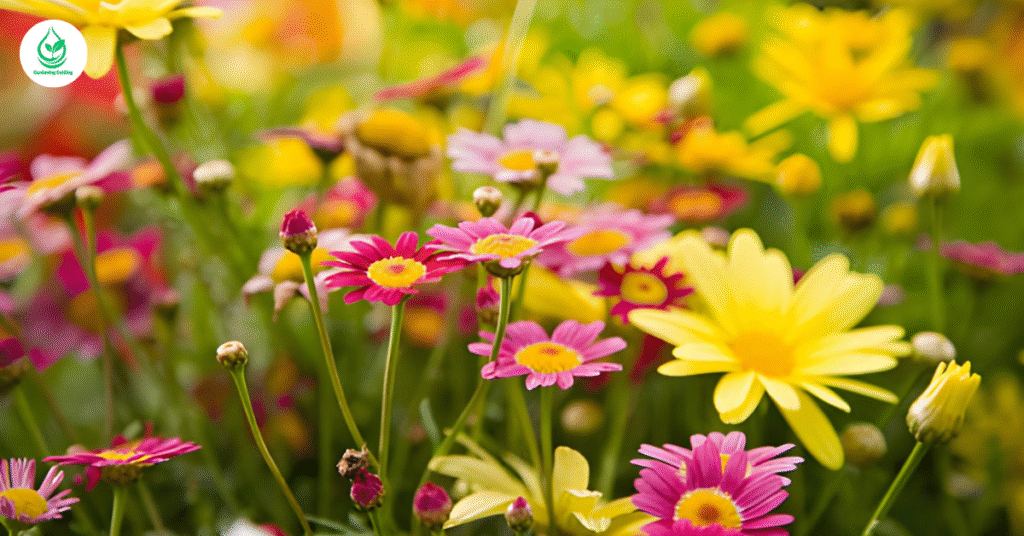
5. Lilies – Pure, Fragrant, and Timeless
A Symbol of Renewal and Grace
Lilies are known for their large, trumpet-shaped flowers and sweet fragrance. They symbolize purity, rebirth, and transience. White lilies are often used in weddings and memorials, while pink and orange varieties bring vibrant beauty to gardens.
How to Grow Lilies Perfectly
Lilies thrive in well-drained soil and full to partial sunlight. Plant bulbs about 6 inches deep in spring or fall, ensuring proper spacing. Water regularly during blooming season, and mulch the soil to retain moisture. After flowering, remove spent blooms but keep leaves until they yellow to feed the bulb.
Using Lilies in Decor and Gardens
Lilies make breathtaking cut flowers for vases, especially in entryways or dining rooms. In gardens, mix different varieties like Asiatic or Oriental lilies for a layered effect. Their fragrance also makes them ideal for sensory gardens or patios where you can relax among sweet scents.

6. Daisies – The Flower of Innocence
Bright, Cheerful, and Effortless
Daisies bring a sense of simplicity and happiness to any setting. Their classic white petals and yellow centers symbolize innocence, purity, and new beginnings. They’re often associated with childhood joy and friendship.
Easy Growth and Maintenance
Daisies are among the easiest flowers to grow, thriving in sunny locations with moderately fertile soil. Water them weekly and remove wilted flowers to encourage continuous blooming. They can reseed themselves, meaning you’ll enjoy them year after year with minimal effort.
Decorating with Daisies
Daisies are ideal for cottage-style gardens or meadows. You can also grow them in containers for patios or balconies. A vase filled with fresh daisies adds instant freshness to interiors, making them perfect for kitchens or bedrooms.
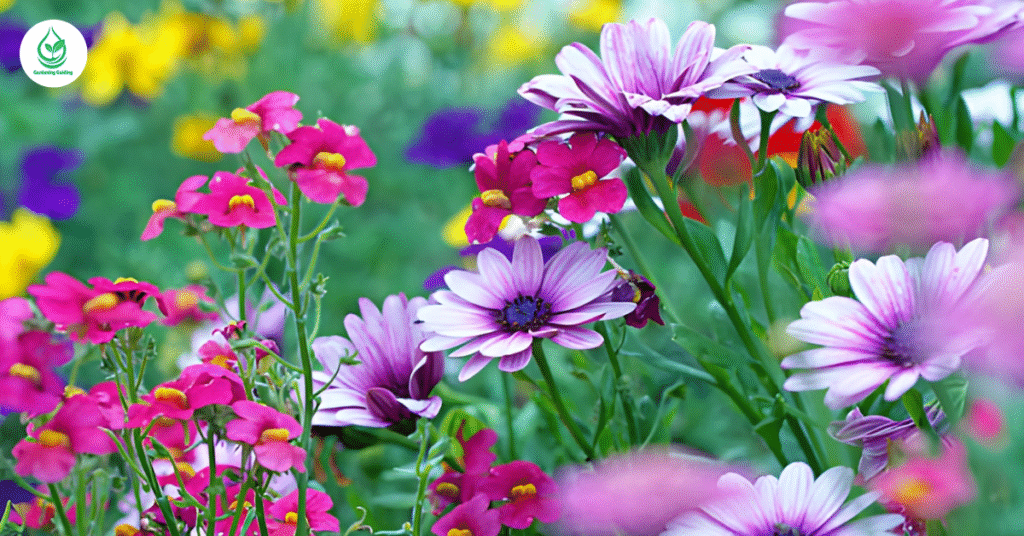
7. Peonies – The Bloom of Prosperity
Soft Petals, Strong Symbolism
Peonies are adored for their lush, full blooms and sweet scent. They symbolize prosperity, romance, and good fortune often featured in weddings and luxury floral arrangements. Their layered petals make them one of the most photogenic flowers ever.
Growing the Perfect Peony
Peonies need a cold winter period to bloom well. They prefer well-drained soil and at least six hours of sun daily. Avoid transplanting frequently they like to stay in one spot. Feed with compost or organic fertilizer in spring for abundant flowers.
How to Use Peonies in Design
Peonies are excellent statement blooms for gardens or floral displays. Combine them with roses or hydrangeas for rich, layered bouquets. In landscapes, they pair beautifully with shrubs and perennials for a soft, romantic feel.
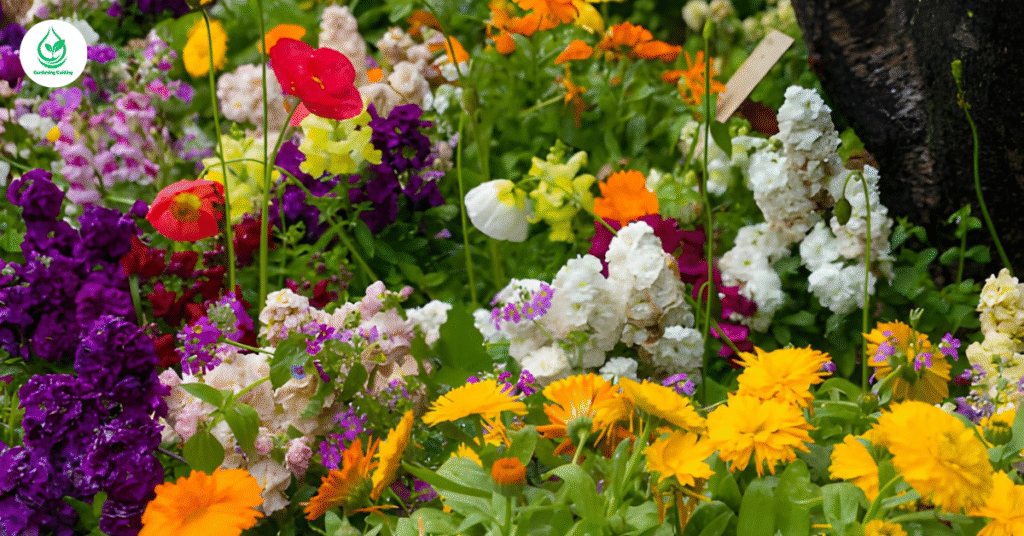
8. Marigolds – The Sunshine Flower
Bright Hues with Cultural Meaning
Marigolds are known for their golden-orange petals and spicy fragrance. In many cultures, they symbolize positivity and protection used in festivals, weddings, and religious ceremonies. Their warm tones bring sunshine to any garden.
Easy to Grow and Maintain
Marigolds are low-maintenance annuals that thrive in sunny locations. They tolerate poor soils and dry weather. Water moderately and remove spent blooms to keep them flowering longer. They also naturally repel pests, making them perfect companion plants for vegetables.
Creative Uses for Marigolds
Beyond gardens, marigolds can be used for natural dyes, skincare, and even edible garnishes. Plant them along borders or pathways for a bright, cheerful look. You can also float marigold petals in water bowls for festive home décor.
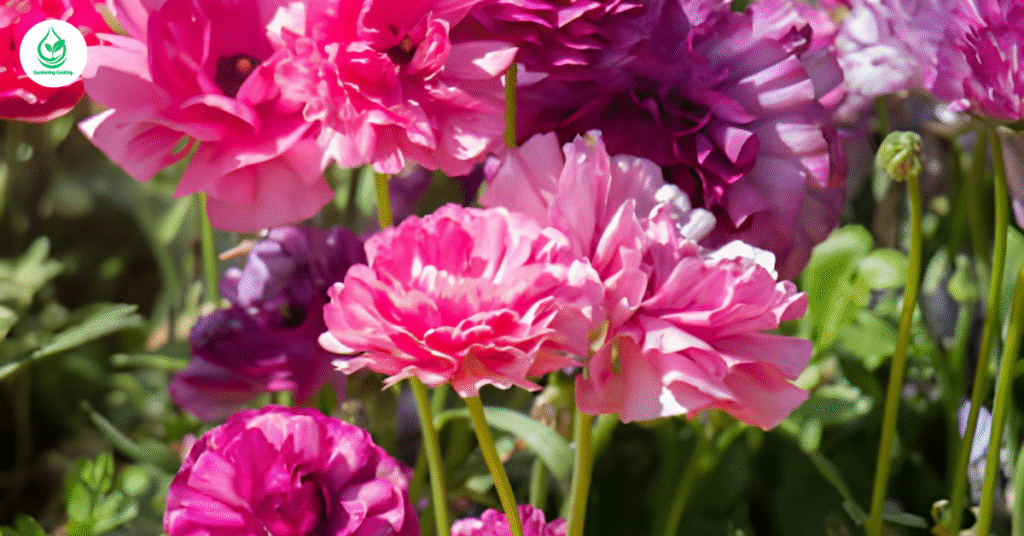
9. Chrysanthemums – The Flower of Autumn
Meaning and Cultural Significance
Chrysanthemums, or “mums,” are a classic autumn flower. They symbolize longevity, loyalty, and happiness in many cultures. Their wide range of shapes and colors makes them popular across seasons.
Growing Chrysanthemums Successfully
Plant chrysanthemums in well-draining soil with plenty of sunlight. Water at the base to prevent leaf diseases. Pinch off tips early in the growing season to encourage bushy, full plants. Fertilize every two weeks for maximum bloom density.
Decor and Styling Tips
Mums are perfect for fall gardens or porch planters. Their vibrant colors yellow, purple, red, and white add richness to outdoor spaces. Indoors, a bouquet of chrysanthemums can brighten gloomy autumn days.
10. Lavender – The Fragrance of Calm
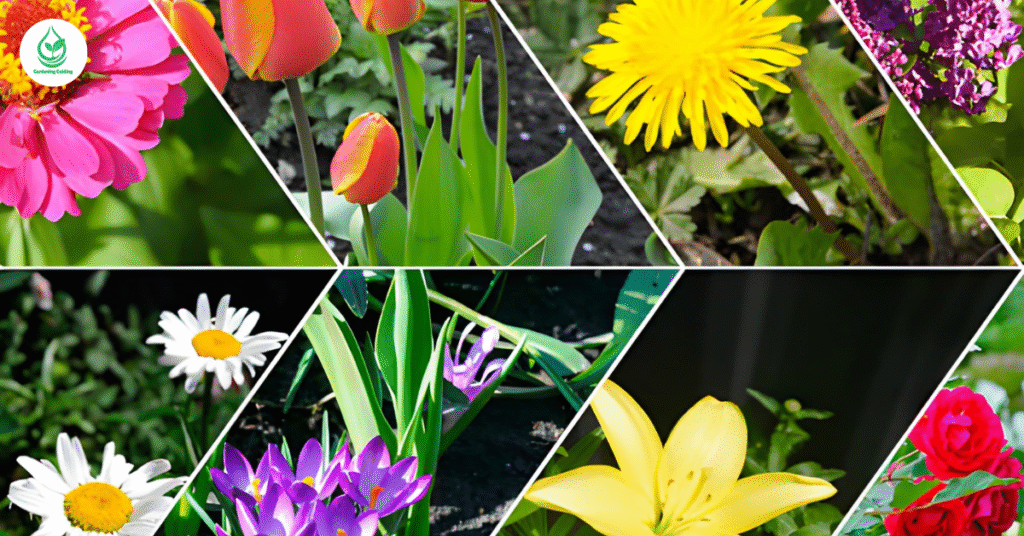
Symbol of Serenity and Healing
Lavender is loved for its relaxing scent and soft purple blooms. It symbolizes calmness, purity, and grace. Lavender is often used in aromatherapy, teas, and beauty products for its soothing properties.
How to Grow Lavender Easily
Lavender thrives in full sunlight and sandy, well-drained soil. Avoid overwatering it prefers dry conditions. Prune after flowering to encourage new growth and shape. This hardy perennial brings fragrance to your garden for years.
Ways to Use Lavender Creatively
Lavender is excellent for borders, pathways, or as an accent in herb gardens. Indoors, it’s perfect for dried arrangements, sachets, or essential oils. A pot of lavender near your window not only smells divine but also keeps insects away naturally.
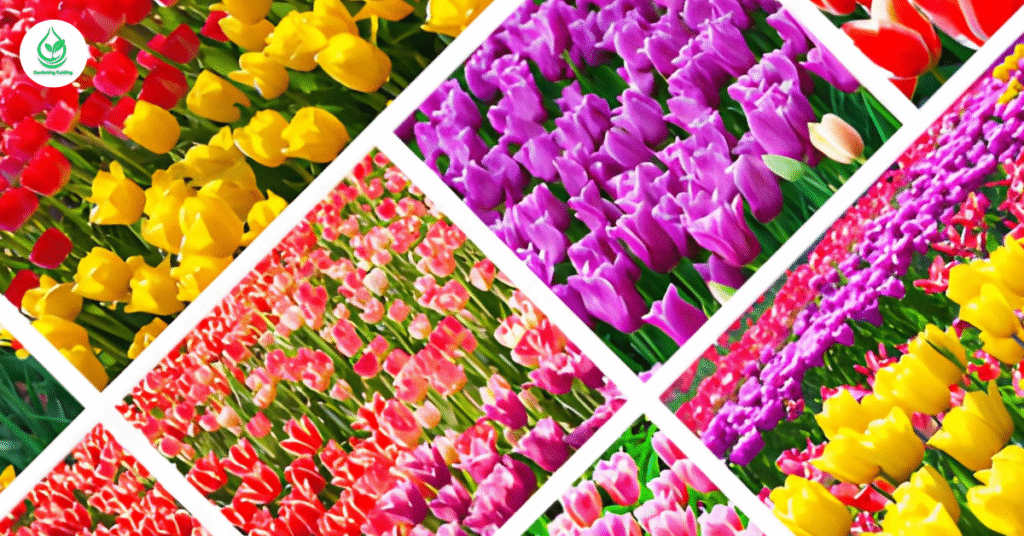
Best Seasons to Grow Each Flower
Each flower has its own rhythm — a season where it blooms best and displays its full beauty. Understanding the right planting and blooming times helps you enjoy a garden that looks colorful all year long.
| Flower Name | Best Planting Season | Blooming Period | Ideal Climate |
| Rose | Early Spring | Spring to Late Fall | Warm, sunny |
| Tulip | Fall | Early to Mid-Spring | Cool winters |
| Sunflower | Late Spring | Summer to Early Fall | Warm and sunny |
| Orchid | Year-round (indoors) | Varies by type | Humid and tropical |
| Lily | Spring or Fall | Summer | Moderate sunlight |
| Daisy | Spring | Spring to Summer | Temperate |
| Peony | Fall | Late Spring to Early Summer | Cold winters |
| Marigold | Early Spring | Summer to Fall | Hot and dry |
| Chrysanthemum | Spring | Late Summer to Fall | Mild climates |
| Lavender | Spring | Summer | Warm and dry |
Each of these flowers can be combined strategically to maintain a continuous bloom cycle throughout the year. For instance, plant tulips for early color, roses and lilies for mid-season charm, and chrysanthemums for late-year brilliance.
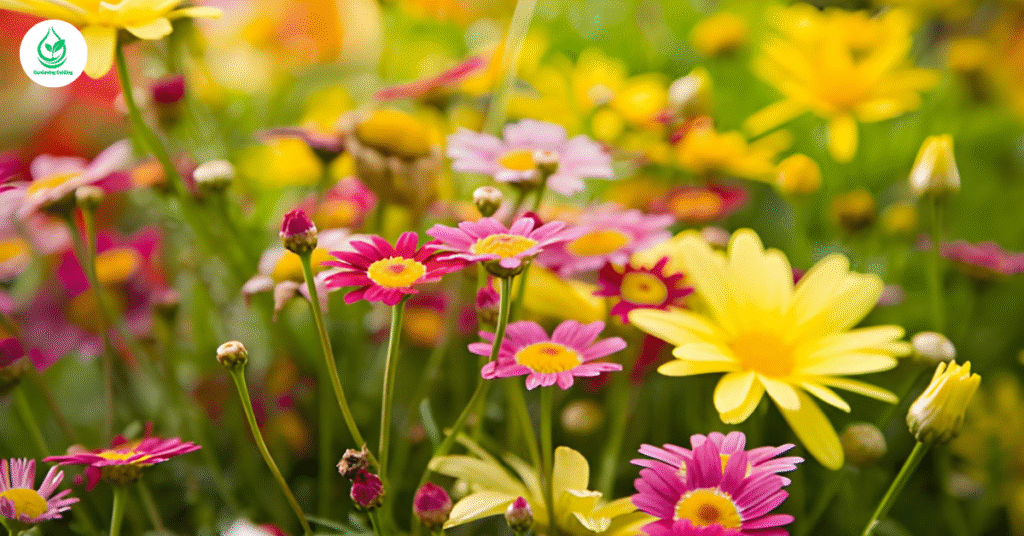
Flower Color Symbolism Chart
Color plays a key role in the emotional feel of your garden. Beyond aesthetics, each hue carries symbolism that connects with mood and energy. Here’s what different flower colors mean:
| Color | Symbolism | Ideal Use |
| Red | Love, passion, courage | Romantic gardens, gifts |
| Pink | Affection, sweetness, innocence | Cottage gardens, home décor |
| Yellow | Happiness, friendship, optimism | Entryways, cheerful spaces |
| White | Purity, peace, remembrance | Weddings, meditation gardens |
| Purple | Royalty, mystery, creativity | Luxury décor, exotic gardens |
| Orange | Energy, enthusiasm, warmth | Garden borders, summer beds |
| Blue | Calm, trust, serenity | Water features, tranquil corners |
| Lavender | Grace, elegance, calm | Aromatherapy spaces, patios |
Using these color combinations helps you create not just a beautiful garden, but one that tells a story — full of emotion and balance.
How to Mix These Flowers in One Garden
Creating a mixed garden with the world’s top flowers is easier than it looks all it takes is balance, contrast, and smart layout planning.
1. Layer Your Garden by Height
Place tall blooms like sunflowers and lilies at the back, medium-height plants like roses and peonies in the middle, and smaller flowers like daisies, marigolds, and lavender in the front. This creates a tiered look that gives depth and visual flow.
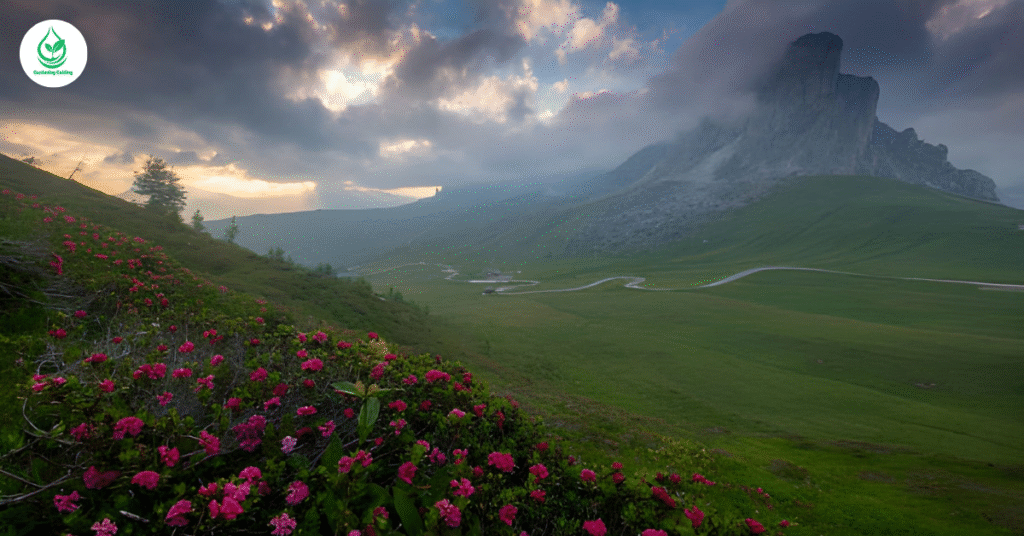
2. Mix Colors for Harmony
Instead of random colors, follow a theme. For example, a “romantic garden” might include red roses, pink peonies, and white lilies. A “sunshine garden” can mix yellow marigolds with orange tulips and bright sunflowers.
3. Combine Fragrance and Texture
Choose flowers not just for looks but for scent and feel. Pair lavender with roses for a calming aroma or chrysanthemums with daisies for texture variety. This makes your garden appealing to both the eyes and the senses.
4. Use Seasonal Rotation
Plan flowers so that some bloom early (tulips, daisies), some mid-season (roses, lilies, peonies), and others late (mums, marigolds). This ensures your garden never looks bare.
Common Flower Care Problems and Fixes
Even the most beautiful flowers can face issues like pests, diseases, or poor blooms. Here’s how to handle them effectively:
| Problem | Cause | Solution |
| Wilting flowers | Over or under-watering | Water deeply but less often; ensure proper drainage |
| Yellowing leaves | Nutrient deficiency | Add organic fertilizer or compost |
| Pests like aphids | Insects feeding on sap | Use neem oil or mild insecticidal soap |
| Fungal diseases | Poor airflow or wet soil | Space plants properly, avoid overhead watering |
| No blooms | Lack of sunlight or pruning | Move to sunnier spot, prune spent blooms |
Regular observation and simple preventive care go a long way in keeping your garden thriving.
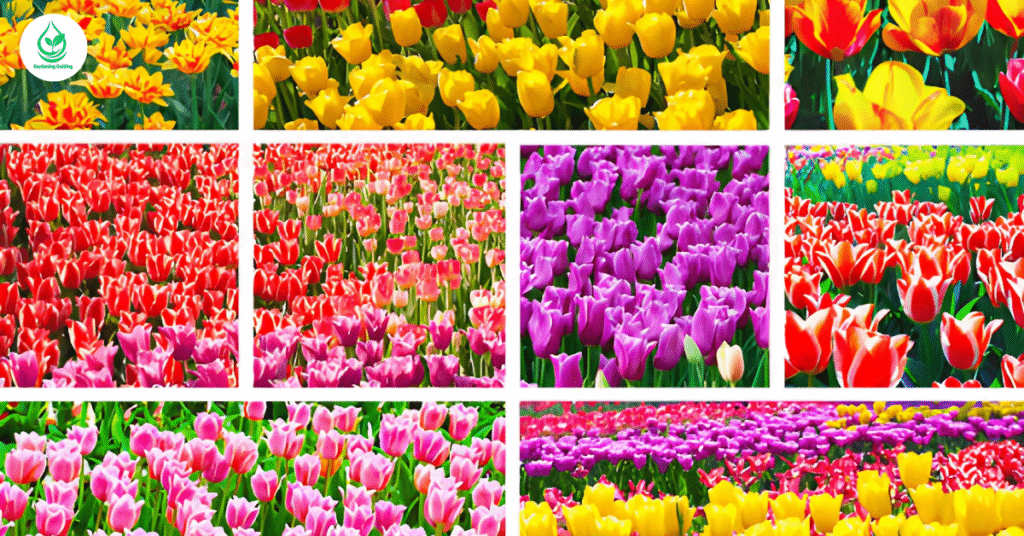
Pros and Cons of Popular Flowers
| Pros | Cons |
| Beautiful and colorful blooms enhance any space | Some species require high maintenance |
| Variety of species for every climate and style | Seasonal blooms may leave gaps during off-months |
| Attract pollinators like bees and butterflies | Some flowers are sensitive to humidity or pests |
| Offer emotional and aesthetic value | Need regular watering and pruning |
| Can be used for decor, gifting, and wellness | Perennials may take years to mature fully |
Understanding these helps you plan your garden better — balancing low-maintenance and statement flowers.
FAQs About Popular Flowers
Q1: Which flower is the easiest to grow for beginners?
Marigolds and daisies are perfect for beginners they’re resilient, bloom quickly, and need minimal care.
Q2: How often should I water these flowers?
Most flowers prefer deep watering two to three times a week, depending on weather and soil type.
Q3: Which flowers bloom the longest?
Roses, lavender, and chrysanthemums have extended bloom periods with the right care.
Q4: Can I grow these flowers indoors?
Yes! Orchids, lavender, and some rose varieties grow beautifully indoors with enough sunlight and ventilation.
Q5: How do I keep my flowers blooming all year?
Plant different species with staggered bloom seasons and use fertilizers regularly to support healthy growth.
Q6: Are these flowers pet-friendly?
Lavender and daisies are generally safe, but lilies and tulips can be toxic to pets—keep them out of reach.
Q7: How can I make flower arrangements last longer indoors?
Cut stems diagonally, change water every 2 days, and keep away from direct sunlight.
Q8: Which flower smells the best?
Lavender and lilies are known for their rich fragrance that lingers beautifully indoors.
Q9: How can I make my garden attract butterflies?
Grow nectar-rich flowers like sunflowers, daisies, and marigolds—they attract pollinators naturally.
Q10: What is the best soil type for these flowers?
Most popular flowers prefer well-drained loamy soil enriched with compost for balanced nutrition.

Conclusion
From the timeless beauty of roses to the cheerful brightness of marigolds, each of these 10 top most popular flowers offers something unique fragrance, emotion, and vibrant color. By understanding their growing seasons, colors, and care needs, you can design a garden that blooms with joy all year round.
Gardening isn’t just about planting it’s about nurturing life, creating beauty, and connecting with nature’s rhythm. Whether you grow a small bed of tulips or an expansive rose garden, each bloom tells a story of love, patience, and the wonder of creation.

